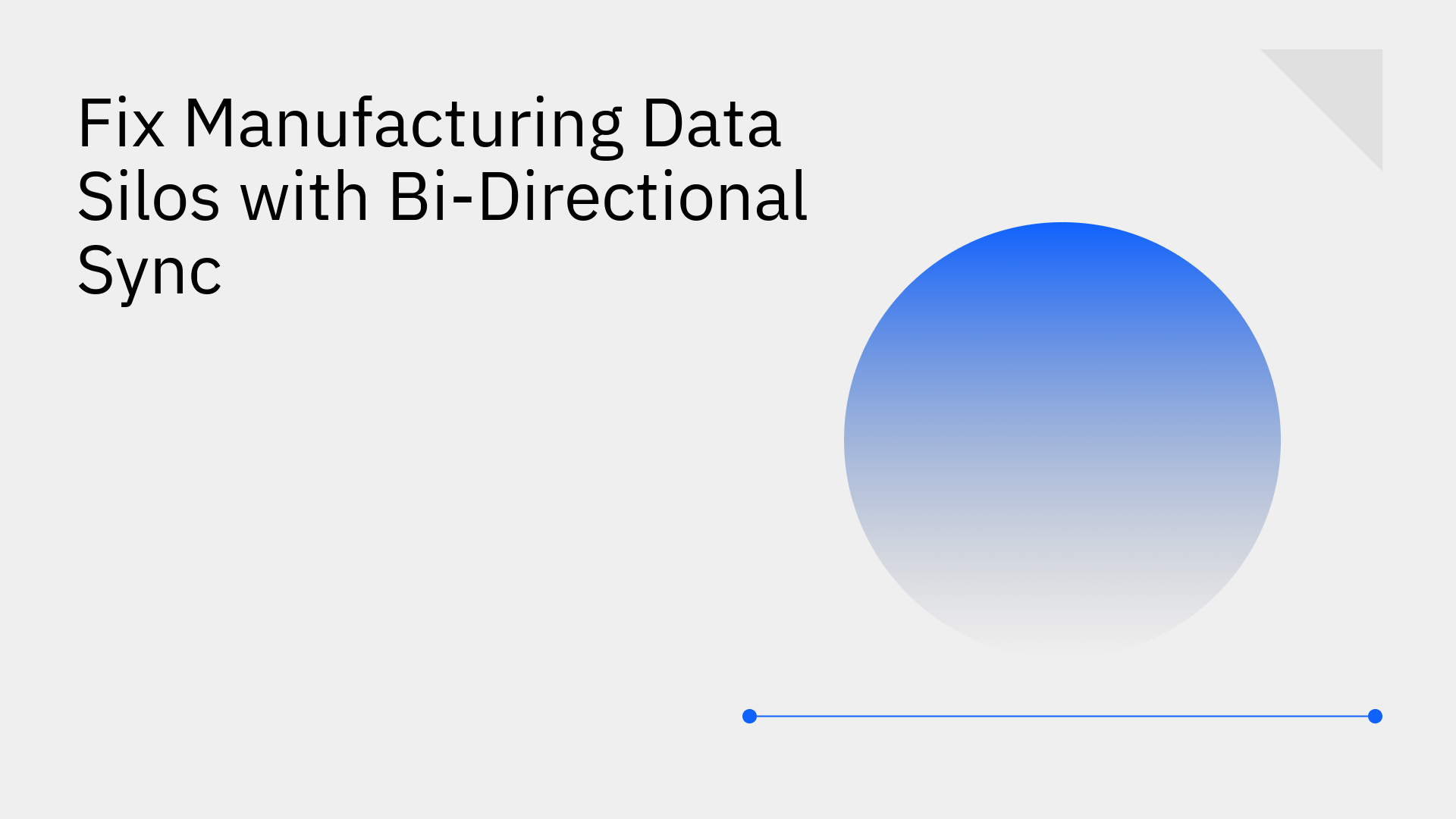
Data silos are one of the most significant operational hurdles in the modern manufacturing industry. According to a recent Hexagon report, a staggering 98% of manufacturers face data-related issues that directly stifle innovation and slow their time-to-market [1].
These fragmented data environments, where information is trapped within disconnected ERPs, CRMs, MES, and legacy systems create widespread inefficiencies, cripple inter-departmental collaboration, and result in substantial financial losses.
To overcome this, leading manufacturers are turning to bi-directional sync to achieve real-time data integration for the manufacturing industry. This article explores the high costs of data silos and demonstrates how a robust, real-time synchronization strategy can resolve them, creating a unified and efficient operational backbone.
In a manufacturing environment, disconnected data systems are more than an inconvenience; they are a direct threat to competitiveness. When teams on the shop floor, in the warehouse, and in the front office operate from different sets of information, the consequences ripple across the entire organization.
Bi-directional synchronization is a data integration process where information flows back and forth between two or more systems in real-time. This ensures that all connected applications—from the CRM to the ERP to a production database share the most current and consistent version of the data.
This approach stands in stark contrast to traditional methods:
In dynamic manufacturing environments, decisions cannot wait for the next batch run. Real-time bi-directional sync reflects updates in milliseconds, providing an accurate, live view of operations. While this approach is powerful, it introduces the challenge of conflict resolution—managing instances where the same data is updated in two systems simultaneously. A successful implementation requires a robust platform engineered to handle these scenarios without data loss. To learn more, see this complete Bi-directional Sync: An Overview.
By creating a single, cohesive data fabric, bi-directional sync directly addresses the core challenges caused by silos. It transforms disconnected systems into a unified, intelligent operational network.
Syncing data across critical systems like Enterprise Resource Planning (ERP), Manufacturing Execution Systems (MES), and inventory platforms creates a single source of truth for the entire production lifecycle. This unified view delivers immediate benefits:
With a connected data ecosystem, managers can trust that the information in their dashboards reflects the reality on the factory floor. You can explore this topic further in our article on Real-Time ERP Data Sync.
Bi-directional sync provides a live, 360-degree view of the supply chain by integrating data from procurement, logistics, and inventory management systems. This real-time visibility allows manufacturers to move from a reactive to a proactive supply chain strategy, leading to tangible advantages:
These capabilities are critical for building a resilient and agile supply chain. You can see how this works in these Bi-Directional Sync Explained: 3 Real-World Examples.
For many manufacturers, quality management and regulatory compliance involve manually collecting and consolidating data from disparate sources—a process that is both time-consuming and error-prone. Bi-directional sync automates this entire workflow. By continuously syncing quality control data from shop floor systems with central databases and ERPs, you can:
Stacksync is a purpose-built platform designed to deliver seamless, real-time, and bi-directional data synchronization for the manufacturing industry. It provides the technical foundation to break down data silos and build a truly connected factory.
Unlike generic iPaaS platforms or brittle custom-coded solutions, Stacksync is engineered specifically to solve the core integration challenges faced by manufacturers.
Stacksync offers a suite of features designed to power mission-critical use cases on the factory floor and beyond. While there are many enterprise data integration tools that eliminate system silos, our platform provides a unique combination of power and simplicity.
Data silos are a solvable problem. They represent a significant barrier to efficiency, productivity, and innovation in manufacturing, but they don't have to be a permanent feature of your operations. Bi-directional sync provides the real-time, unified data foundation needed to compete in today's demanding industrial landscape.
Stacksync is the premier platform to achieve this transformation. With powerful, scalable, and user-friendly data sync and workflow automation capabilities, we empower manufacturers to unlock the full potential of their data.
Ready to unify your manufacturing data and unlock new levels of efficiency? Book a demo with a Stacksync engineer today.